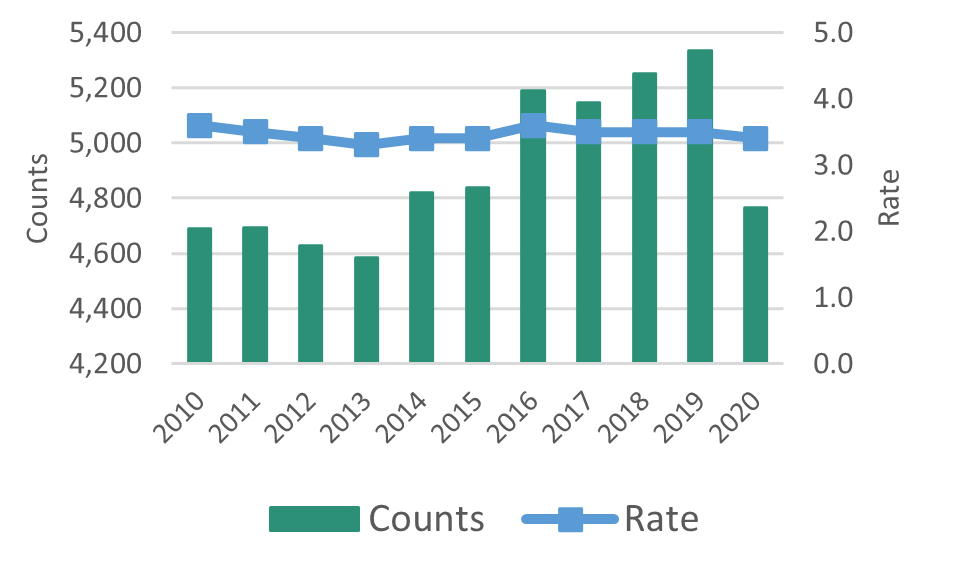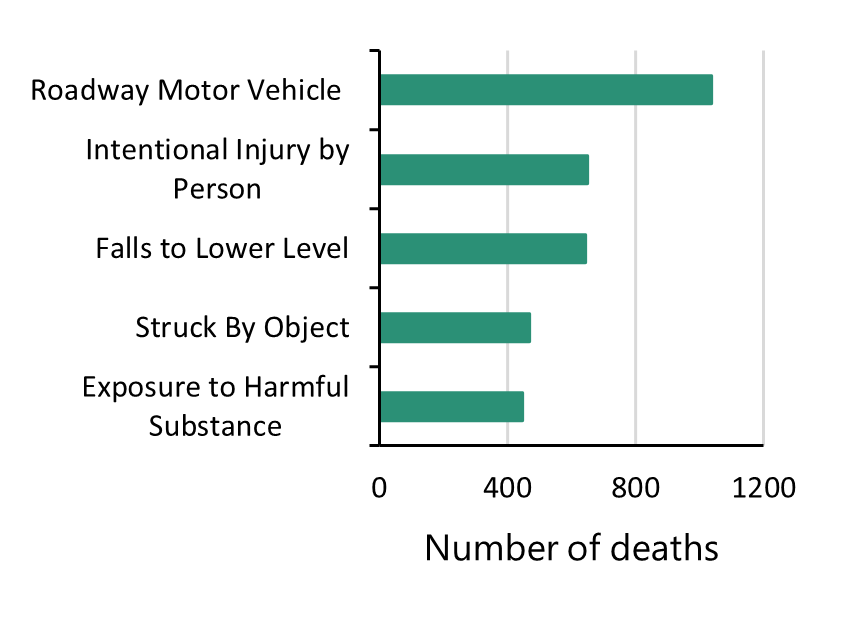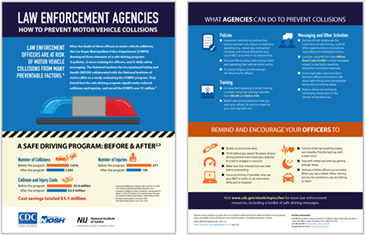Traumatic Injury Prevention Program
What are our priorities?
The Traumatic Injury Prevention Program partners with industry, labor, government agencies, trade associations, professional organizations, and academia to reduce and prevent work-related injuries and deaths. The program’s research aims to:
- Address the leading causes of work-related traumatic injury.
- Reduce work-related injuries among disproportionately affected occupations and workers.
- Understand the impact of emerging technologies on worker injuries.
What do we do?
- Conduct research that leads to the prevention of the leading causes of work-related traumatic injuries: motor vehicle crashes, violence, falls, and contact with industrial machines and vehicles.
- Identify and evaluate ways to reduce traumatic injuries among disproportionately affected occupations and workers, such as racial and ethnic minorities, young and older workers, and those in non-standard work arrangements, such as temporary workers.
- Share research findings and evidence-based recommendations with partners who can put the information into practice.
- Conduct surveillance and make occupational injury data available to employers, workers and the research community to guide research and prevention efforts.
What have we accomplished?
- Convened the 8th National Occupational Injury Research Symposium (NOIRS) in May 2022 with 365 virtual participants. NOIRS is the only national forum exclusively dedicated to presenting and discussing the latest methods, findings, and translation activities related to traumatic occupational injury research and prevention.
- Published a fact sheet on preventing motor vehicle crashes among law enforcement officers based on a rigorous intervention evaluation.
- Wrote three NIOSH Science Blog posts on workplace violence: Suicide Prevention for Healthcare Workers; Home Healthcare Workers; and Workplace Violence Research.
- Published laboratory-based research showing that industrial helmets protect workers from falling objects and provide head protection from falls.
- Funded research that used machine learning algorithms to identify injuries among agricultural workers in pre-hospital reports. These methods hold potential for filling gaps in agricultural injury surveillance.
What’s next?
- Publish a literature review that informs future motor vehicle safety research to address underserved worker groups.
- Publish findings from collaborative research with the U.S. Air Force to evaluate their fall prevention programs.
- Publish an article on risk factors for suicide among firefighters and law enforcement personnel.
- Publish results from surveillance research using emerging informatics methodologies.
- Update the Work-Related Injury Statistics Query System (Work-RISQS) to allow users to analyze emergency department-treated occupational injuries by industry

Mention of any company or product does not constitute endorsement by the National Institute for Occupational Safety and Health, Centers for Disease Control and Prevention
At-A-Glance
The Traumatic Injury Prevention Program strives to improve worker safety and reduce risks of traumatic injuries. This snapshot shows recent accomplishments and upcoming projects.
Counts and rate of fatalities from work-related injuries in all industries (per 100,000 FTE)

Leading causes of work-related death, 2020

Source: U.S. Bureau of Labor Statistics Census of Fatal Occupational Injuries
To learn more, visit www.cdc.gov/niosh/programs/ti/
July 2022
Page last reviewed: July 1, 2022
Content source: National Institute for Occupational Safety and Health

